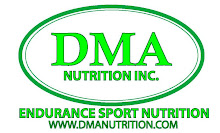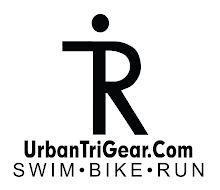Unless you have been hiding under a rock, you have probably heard their is a debate on health care taking place in the US. I’ve reprinted an article from David S. Hilzenrath of the Washintonpost.com. This could be very important information for you or perhaps a family member or friend. If you refer a friend or family member to Fit First Chicago, you will receive a $50 gift certificate to Fit First Chicago that you are able to apply to any Fit First Chicago training or nutrition service.
Enjoy,
Ryan Riell
Get in Shape or Pay a Price
By David S. Hilzenrath
That's a message more Americans could hear if the health care reform bills passed by the Senate Finance and Health committees become law.
By more than doubling the maximum rewards and penalties that companies can apply to employees who flunk medical evaluations, the bills could put workers under intense financial pressure to lose weight, stop smoking or even lower their cholesterol.
The initiative, largely eclipsed in the health care debate, builds on a trend that is already in play among some corporations and that more workers will see in the packages they bring home during this month's open enrollment. Some employers offer lower premiums to people who complete personal health assessments; others offer only limited benefit packages to smokers.
The current legislative effort takes the trend a step further. It is backed by major employer groups, including the U.S. Chamber of Commerce and the National Association of Manufacturers. It is opposed by labor unions and groups devoted to combating serious illnesses, such as the American Heart Association, the American Cancer Society, and the American Diabetes Association.
A colossal loophole?
President Obama and members of Congress have declared that they are trying to create a system in which no one can be denied coverage or charged higher premiums based on their health status. The health insurance lobby has said it shares that goal. However, so-called wellness incentives could introduce a colossal loophole. In effect, they would permit insurers and employers to make coverage less affordable for people exhibiting risk factors for problems like diabetes, heart disease and stroke.
"Everybody said that we're going to be ending discrimination based on preexisting conditions. But this is in effect discrimination again based on preexisting conditions," said Ann Kempski of the Service Employees International Union.
The legislation would make exceptions for people who have medical reasons for not meeting targets.
Supporters say economic incentives can prompt workers to make healthier choices, thereby reducing medical expenses. The aim is to "focus on wellness and prevention rather than just disease and treatment," said Business Roundtable president John J. Castellani.
BeniComp Group, an Indiana company that manages incentives for employers, says on its Web site that the programs can save employers money in a variety of ways. Medical screenings will catch problems early. Employers will shift costs to others. Some employees will "choose other health care options."
Douglas J. Short, BeniComp's chief executive, said the incentives he uses focus on outcomes, not conditions.
"I can't give you an incentive based on being a diabetic or not being a diabetic, but whether you're managing your blood glucose level — I can give you an incentive based on that," Short said.
National epidemic of obesity
The incentives could attack a national epidemic of obesity. They also cut to a philosophical core of the health care debate. Should health insurance be like auto insurance, in which good drivers earn discounts and reckless ones pay a price, thereby encouraging better habits? Or should it be a safety net in which the young and healthy support the old and sick with the understanding that youth and good health are transitory?
Under current regulation, incentives based on health factors can be no larger than 20 percent of the premium paid by employer and employee combined. The legislation passed by the Health and Finance committees would increase the limit to 30 percent, and it would give government officials the power to raise it to 50 percent.
A single employee whose annual premiums cost him and his employer the national average of $4,824 could have as much as $2,412 on the line. At least under the Health Committee bill, the stakes could be higher for people with family coverage. Families with premiums of $13,375 — the combined average for employer-sponsored coverage, according to a recent survey — could have $6,687.50 at risk.
An amendment passed unanimously by the Health Committee would allow insurers to use the same rewards and penalties in the market for individual insurance, though legislative language subsequently drafted by the committee's Democratic staff does not reflect that vote, Sen. Mike Enzi (Wyo.), for the committee's ranking Republican, has said. The bill drafted by the Senate Finance Committee would set up a trial program allowing insurers in 10 states to use wellness-based incentives for individuals.
America's Health Insurance Plans, an industry lobby, has argued that insurers should be allowed to consider participation in wellness programs when setting individual premiums.
Wellness incentives voluntary
Employers and other advocates of expanded wellness incentives say taking steps to get healthier would be voluntary. Sen. John Ensign, a Nevada Republican and lead sponsor of the Finance Committee's wellness provision, said his proposal "would guarantee that the incentive is strong enough for Americans to want to participate."
Wellness incentives have been spreading rapidly in the corporate world. Unlike the legislative proposals, which address incentives based on results, the corporate programs typically compensate employees based on effort alone — for example, enrolling in smoking cessation programs even if they fail to kick the habit, or undergoing detailed medical assessments regardless of the findings. But there are exceptions: The Safeway supermarket company allows certain employees to reduce their premiums by meeting standards for body mass and other measures. Safeway chief executive Steve Burd has framed it as an issue of personal responsibility.
You can find the full article here:















.jpg)
